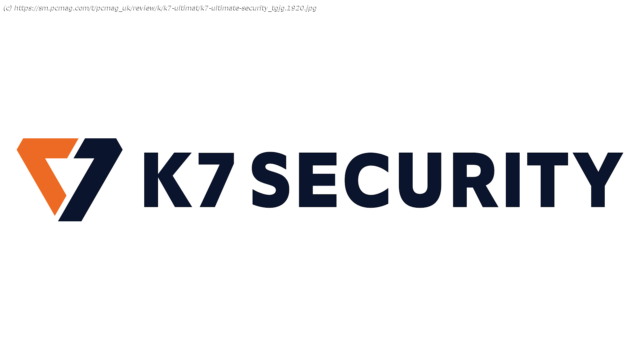A cross-platform suite bursting with components of varied quality
When security companies release a product line update, they typically update the whole line, from the standalone antivirus up to the most feature-packed security suite. Not K7. The antivirus and entry-level suite from 10 years ago hardly look different from today’s versions. K7 Ultimate Security, though, has a newer appearance, introduced just a couple of years ago. K7 Ultimate remains the company’s top-tier mega-suite, with a plentiful collection of features and security on multiple platforms. However, the effectiveness of these features ranges from very good to very bad. K7 does have the virtue of an unusually low price, but before diving into the bargain bin, you should consider Editors’ Choice Norton 360 Deluxe. Yes, it costs more, but its cross-platform components are all superior, and it includes VPN and online backup. Editors’ Choice Bitdefender Total Security is also well worth a look. It outdoes K7 in sheer number of features, and they all work well.How Much Does K7 Ultimate Security Cost?
A one-device subscription for K7 Ultimate Security, K7’s top-tier suite, sets you back just $35 per year, the lowest price among this top tier of suites. It’s lower than any entry-level suite I’ve covered except for the related K7 Total Security and the lackluster Comodo Internet Security Pro. G Data Internet Security and G Data Total Security come close, at $39.95 and $49.95, respectively. At the high end, Panda Dome Premium goes for $139.99. Yes, that’s a one-license price.
K7 remains a price leader for three-device subscriptions, at $53 per year. Here, too, only K7’s entry-level suite and Comodo cost less. At this level, other top-tier suites range from G Data’s $55.95 per year to Panda’s $159.99.
When it comes to protecting five devices, some competitors start to catch up with K7’s $79 price. Avast One Silver, ESET Home Security Premium, and Total Defense Premium Internet Security cost just a bit more, $79.99 per year. ESET Home Security Essential, F-Secure Internet Security, and ZoneAlarm Extreme Security go for $10 per year less than K7.
Many competing suites cost quite a bit more than K7 for five licenses. Bitdefender Total Security, for example, costs $109.99 per year for five licenses. Norton 360 Deluxe runs you $119.99 per year, though admittedly, you get a lot: five security suite licenses, five full-powered VPN licenses, and 50GB of online storage for your backups.
At the one- and three-device tiers, K7 beats out all the best competitors. When you get to five devices, it still beats most of them. These consistently low prices have earned K7 a spot in PCMag’s Budget Buys list, along with K7’s antivirus and entry-level suite.
Do note that McAfee+ doesn’t fit the standard price comparison. At its lowest tier, it costs $149.99 per year, but that fee covers every device in your household, including devices running Windows, macOS, Android, iOS, and even ChromeOS. Higher tiers add identity theft protection.Getting Started With K7 Ultimate
As with K7’s entry-level suite, installing this suite is quick and easy. Once you’ve updated its antivirus definitions and activated the product (or launched a 30-day trial), you’re ready to go.
K7’s antivirus and entry-level suite have a blocky, slightly awkward display, with screens sliding in from various directions. It’s not always easy to find the feature you want. They also exhibit signs of age, things like five-year-old features marked “new” and an emphasis on the defunct Internet Explorer. K7 Ultimate, the top-tier suite reviewed here, has a friendlier interface.
The main window still prominently features stats on the latest update, virus definition version, and subscription duration, just below a large status banner. Below the stats, the four icons for Scan, Update, Tools, and Wi-Fi Advisor are joined by a new one, Backup. Not seen in the old interface, an activity box at right reports the number of threats detected, malicious URLs blocked, phishing URLs blocked, and firewall attacks blocked.
You see bigger changes in pages like Settings and Tools. In the old interface, these pages held as many as six large buttons invoking suite features, with an easy-to-miss arrow sliding in additional pages for features past six. Now they simply scroll to hold as many features as needed.Features Shared With K7 Antivirus
Everything you get with K7 Antivirus Premium also appears in this security suite, and you get quite a bit more than just antivirus. For the blow-by-blow saga of my antivirus testing, please read the antivirus review. I’ll offer a quick recap here.
I follow reports from four antivirus testing labs around the world. For years, two of them regularly included K7 in their reports. That’s gone down to one lab in the last few years, as AV-Comparatives stopped testing K7, but getting one lab’s attention is still good. Over 40% of the antivirus companies I follow don’t appear in any lab reports.
With a near-perfect 17.5 out of 18 possible points from AV-Test Institute, K7 earned the Top Product label. I should note that almost all products in the latest test report reached Top Product status, and most of them took the full 18 points.
Each of the four labs uses a different rating scheme, ranging from straight numeric scores to pass/fail. I’ve developed an algorithm to map all the scores onto a 10-point scale and merge them into an aggregate lab score. With just one report, K7 doesn’t merit an aggregate score, though its one score is good. AVG Internet Security managed a perfect 10 based on scores from two labs, and Avast’s near-perfect scores from four labs yield an impressive 9.9 points.
K7 didn’t do as well in my hands-on malware protection test, scoring 8.4 of 10 possible points. That’s the lowest score among products tested with my latest set of malware samples. Tested with those same threats, UltraAV scored a perfect 10. Avast, AVG, and Norton, all relying on the same antivirus engine, scored 9.7. Webroot Total Protection also scored 9.7 with its own unrelated antivirus technology.
I also test each antivirus by challenging it with 100 very fresh malware-hosting URLs, kindly supplied by the testing lab MRG-Effitas. I launch each one in turn and record whether the antivirus blocks access to the page, eliminates the malware on download, or sits idly without offering any protection.
K7’s antivirus doesn’t include web-level protection, so its score of 89% represents only those instances when it caught the malware on download. When I re-ran this test with K7 Total Security, the addition of web-level protection raised that score to 96%, a much better result.
Looking on the bright side, the antivirus performed perfectly in my ransomware protection test. For this test, I turned off all protective layers except behavior-based protection and tried to launch more than a dozen real-world ransomware attacks. K7 fended them all off, with no damage to the test system except for a single unimportant text file. That’s significant, as many competitors have allowed ransomware to encrypt dozens or even hundreds of files before behavior-based detection kicked in and quashed their activities.
Even at the antivirus level, K7 includes a basic firewall that defends against hack attacks and prevents local programs from abusing your network connections. Other bonus features include a pair of simple privacy cleaners, a virtual keyboard, and vaccination of USB drives against infection.
A simple device control system lets you control the use of USB drives, CD/DVD drives, and floppies, but it’s nowhere near the full-scale device control found in G Data Total Security and a few others. The antivirus will also scan for security vulnerabilities, abnormal system setting changes, and tracking cookies.
As you can see, you get a lot of security features from K7 even at the standalone antivirus level. But as my review details, some of these are redundant or don’t work as they should.Security Features Shared With K7 Total Protection
You need serious coding skills to create a malware program that can evade detection by both the operating system and antivirus software. Some cybercrooks skip the coding and attack the weakest link—the unsuspecting user. Rather than trying to scrape and exfiltrate personal data, a phishing attack simply tricks the user into giving away sensitive credentials. When an unsuspecting visitor logs in, the fraudsters capture the username and password and thereby own the account.
Sure, you can learn to spot these frauds, but it’s nice to have help from your antivirus. The phishing protection that’s missing from K7 AntiVirus shows up in both of K7’s security suites, but it’s not the boon you might expect.
To test phishing protection, I use hundreds of real-world fraudulent URLs gathered from phishing-centered websites. I test the antivirus alongside the phishing protection built into Chrome, Edge, and Firefox. K7 caught just 17% of the verified fraudulent pages, even worse than its previous score of 26% and among the lowest scores ever. Many competitors manage 100% detection in this test.
The Web Protection component marks up results in popular search engines, with a green icon for safe and a red one for dangerous. For that rare soul who still needs a local spam filter, K7 provides one. Webcam Protection prevents pervs from peeping through your webcam, and Privacy Service (in combination with the parental control system, oddly) halts accidental or malicious transmission of your personal information.
As noted, the behavior-based ransomware protection system performed perfectly in testing. However, it’s not the only weapon in K7’s anti-ransomware arsenal. Once you configure it, Data Locker prevents all unauthorized access to files in folders you’ve flagged as important, such as Documents and Pictures. If an actual ransomware attack weaseled past all the other protection layers, Data Locker would minimize the damage.






